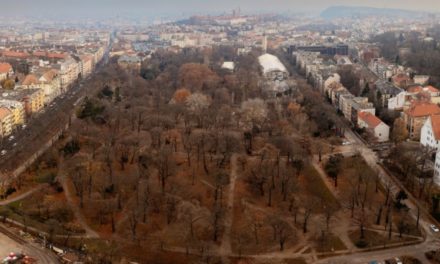The Soviet proverb from the Gulag cited in the title evokes the experience of modern-day slavery more vividly than anything else.
Every year on November 25, we remember the more than 700,000 Hungarians who died in World War II. They were deported to forced labor camps in the Soviet Union during or after World War II. 300,000 of them never returned to their country.
On Friday, November 24, the House of Terror Museum held a museum pedagogy session presenting the history of forced labor camps and the fate of those who were deported. Budapest high school students participating in the program were able to learn about the history of modern-day slavery with the help of original artefacts and interviews with Gulag survivors, but they could also get answers to the question of what effect the Gulag Archipelago had on the National Socialist concentration camps.
The purpose of the session was to introduce it to today's high school generation
the history of the fate of slavery, which was the fate of more than 700,000 Hungarians in the 1940s and 1950s,
show why the system of Soviet forced labor camps was created, and let them see what kind of life the prisoners lived there, many of whom were forced to spend years and decades in inhumane conditions.
In the House of Terror Museum's permanent exhibition, an entire room was dedicated to presenting the world of Soviet forced labor and slave camps.
The Gulag-Málenkij robot room on the second floor reminds us of the Hungarians – civilians, prisoners of war and political convicts – who were dragged to forced labor camps by the Soviet troops.
The size of the room, the map covering the floor of the room, the memories and the wooden paneling on the wall of the room show the hopeless fate of 700,000 Hungarian barrack dwellers held captive in the endless regions of the former Soviet Union.
One of the first measures taken by the communist regime that came to power in Russia in 1917 was to lock up in forced labor camps all those it considered enemies because of their origin or political beliefs. Prisoners conscripted to slave labor were used to perform work deemed necessary for the accelerated industrialization of the Soviet Union.
In 1934, the camp system was organized into the General Directorate of Correctional Labor Camps (Gulag).
The name Gulag later became the collective name for Soviet forced labor camps worldwide.
By the end of the 1930s, under Stalin's reign of terror, the number of camps and those who worked in them reached eight million, according to some estimates, and the inhumane conditions led to the deaths of millions of prisoners. At the outbreak of the Second World War, in addition to the Gulag, the Soviets, in cooperation with it, also created a new camp system for the forced labor of prisoners of war and interned civilians.
Hungarian prisoners of war and civilians deported from Hungary, who were made to work on all major Soviet investments of the post-war years, also went here.
After the Second World War, the victorious Soviet Union considered the labor force of the population of the occupied and subjugated countries as part of reparations: it dragged more than four million foreign citizens to labor camps for forced labor. 85 percent of those taken prisoner were Germans, Japanese and Hungarians, among them were prisoners of war and randomly gathered civilians.
Forced laborers were used to rebuild cities and factories, drain swamps, and build factories, roads, bridges, and dams.
The harsh conditions in the camps, the inhumane work, the brutality of the guard staff, insufficient food and disease, as well as extreme weather conditions caused the weakened prisoners to die in droves.
Due to the inhuman conditions of transportation and the brutal conditions of the concentration and transit camps, many prisoners did not even reach the designated camp.
The number of Hungarians who were sentenced to death by the Soviet military courts is also in the hundreds.
Those who made it to the Gulag Archipelago were decimated by the mandatory, merciless, 10-12-hour daily slave labor in the camps, the cruelty of the guards, the poor care, constant epidemics and diseases, and insufficient medical care.
Those who were lucky enough to see their homeland again could not talk about their suffering for decades. The last prisoner imprisoned in the Soviet Union, András Toma, returned to Hungary in 2000 at the age of 74.
Cover image: In the House of Terror Museum, the size of the Gulag room, the map covering the floor of the room, the memories and the wood paneling on the wall of the room show the hopeless fate of the 700,000 Hungarian barrack dwellers held captive in the endless territories of the former Soviet Union Source: House of Terror
Museum













